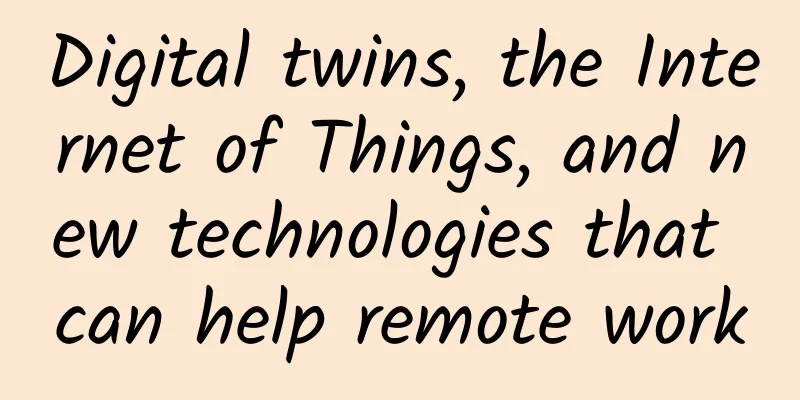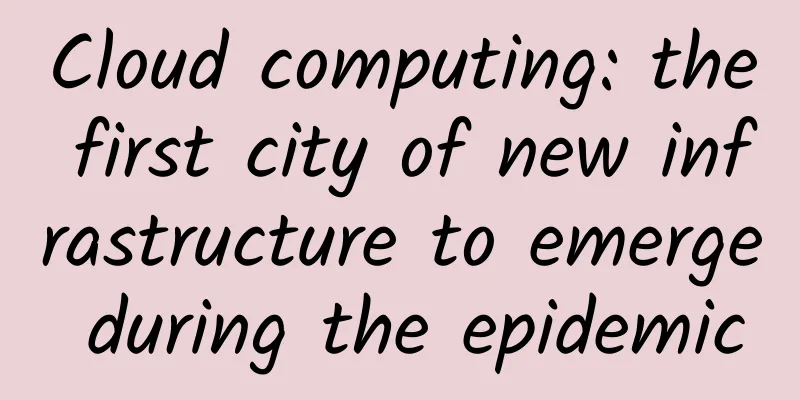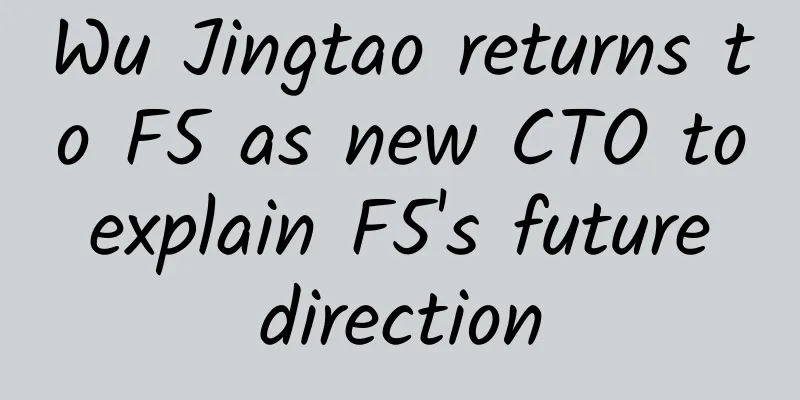Cloud computing has dominated network infrastructure for many years, and it’s time for the 5G era to usher in the next chapter!

|
Technavio predicts that the application of edge computing technology will grow at a rate of nearly 20% per year from 2018 to 2022. This is why the CDN Summit, which has been held for many years, has suddenly become the home of edge computing this year. A little analysis will reveal that this is not accidental. The core reason is that whether it is CDN or edge computing, the underlying logic or technical ideas are consistent. They all hope to break down the whole into parts and provide customers with better and more cost-effective products, technologies and solutions, and provide users with a better user experience. Therefore, many people in the industry believe that CDN vendors have the advantage of being close to the water and getting the moon first when it comes to edge computing, and there is a reason for this. Looking at the entire TMT industry, compared with the application layer, which has been changing over time, the technical architecture layer has always been relatively stable. It is nothing more than the IOE structure, to de-IOE, from cloud computing, to today's edge computing, with the reincarnation of IDC, CDN and other industries in between. So will the popular edge computing today change the centralized network architecture dominated by cloud computing? Tuyao's answer is yes. At this stage, whether it is change, replacement or other words, we see less of them, firstly because of the "resistance" of cloud computing vendors; secondly because of the dormancy of edge computing vendors; thirdly, many people can only look at the present from the present, and the future from the present, but cannot look at the present from the future, let alone look at the future from the future. In short, whether from the 2C end, the 2B end, or the 2T end, it is not a problem for edge computing to replace cloud computing. If there is a problem, it is only a matter of "time". 2C side: The "decentralization" of applications and services is the fundamental reason for the retreat of cloud computing and the rise of edge computing There is an interesting phenomenon in the TMT industry, which is that it is artificially divided into 2C and 2B fields. Needless to say, 2C is a big deal. From the perspective of the final products and services, the "user" of 2B is still the user. Therefore, the "user" is the ultimate decision-making force in the TMT industry, which is the so-called "whoever wins the user wins the world." Take the Internet industry as an example. After more than a decade of development, "users" have been swept into the "decentralization" movement. From portals, search engines to information flows, information and content have been decentralized; from platform e-commerce, self-operated e-commerce, to social e-commerce, community group buying, WeChat business, etc., e-commerce has been decentralized; from long videos to short videos, small videos, live broadcasts, video streaming has also been decentralized... If we deduce in reverse, we can easily find that the decentralization of applications and business models means the decentralization of users; the decentralization of users means the decentralization of data generation; the decentralization of data generation means the decentralization of data processing and network architecture; it also means that centralized infrastructure and network architecture must give way to distributed, decentralized architectural models. Obviously, since the customers' users are decentralized, the B-side vendors who provide services to customers will naturally adapt to this transformation from centralization to decentralization and from centralized to distributed. This is the fundamental reason why edge computing, which uses an open platform that integrates network, computing, storage, and application core capabilities and provides the nearest services on the side close to the object or data source, can rise. Others such as 5G, IoT, artificial intelligence, smart home, autonomous driving, etc. are just favorable industrial backgrounds or application accelerators for the rise of edge computing. Of course, the role of favorable industrial background and accelerators cannot be ignored. Take IoT as an example. According to the "2017-2018 China Internet of Things Development Annual Report", as early as 2017, the number of global IoT devices had reached 8.4 billion, successfully exceeding the number of the global population. Relevant data from China Industry Information Network and the Internet of Things Branch of the China Communications Industry Association also show that the total number of networked AIoT devices in China is expected to reach 2.43 billion in 2019. Even Miao Wei, Minister of Industry and Information Technology, pointed out at the recent Boao Conference that 5G applications should be distributed in a 28 distribution, that is, 20% for human-to-human communication and 80% for communication between things, that is, the Internet of Things. The number of IoT devices in the world exceeds the global population, and the number of connected AIoT devices in China is much higher than the number of smartphones and Internet users in my country, indicating that IoT has a broader space than mobile Internet. The "2017-2018 China IoT Development Annual Report" predicts that by 2025, the global IoT market size may grow to 3.9-11.1 trillion US dollars. Coincidentally, Statista, an internationally renowned data analysis company, also predicts that the size of the IoT market is expected to reach 9 trillion US dollars in 2020. There is no doubt that in order to truly realize the interconnection of all things and the interconnection of all things in IoT, and to maximize the capacity and value of the industry, the network, computing, storage, and application between people and devices, and between devices are naturally the most critical, and these are the "business scope" of edge computing. From the perspective of the technological evolution of the TMT industry, whether it is IOE and de-IOE, IDC and CDN, or cloud computing and edge computing, TMT has been constantly moving back and forth between centralization and decentralization in terms of network technology and infrastructure, just like the historical law that "long-term unity will inevitably lead to division, and long-term division will inevitably lead to unity". It's just that the balance is now leaning towards the decentralized end again. 2B side: Three major industry trends and underlying logic determine that cloud computing is a thing of the past and edge computing is the next stop As mentioned above, the "decentralization" of 2C applications and businesses is the fundamental reason for the rise of edge computing over cloud computing. So what if we look at it from the 2B side? From the 2B perspective, we will find that edge computing is more in line with the three major trends and underlying logic of industry development: First of all, edge computing is more equal and more in line with the trend of full competition in the TMT industry. In the cloud computing era, the industry is guarded by giants such as Amazon AWS, Microsoft Azure, Google Cloud, and Alibaba Cloud, and other manufacturers have very few opportunities. However, edge computing is different. It is the "crossroads" of many fields such as the Internet, mobile Internet, Internet of Things, Industrial Internet, electronics, AI, IT, cloud computing, hardware equipment, and operators. Each type of manufacturer has its own unique advantages and opportunities to rise. For example, operators have the advantage of interconnection; CDN manufacturers have the inherent advantages of distributed architecture and product and technology operations, etc. Secondly, edge computing is the sinking of computing power, which is in line with the current era of "sinking is king". In recent years, the TMT industry, especially the Internet field, has set off a massive sinking movement. The market sinking, channel sinking, operation sinking, brand sinking, marketing sinking... The era of "sinking is king" has arrived. The sinking of computing power of edge computing not only follows the pace of the industry, but also provides technical architecture guarantees for the sinking of other operation nodes. As Gartner's top research analyst Santhosh Rao said, "Organizations that have embarked on their digital business journey have realized that a more decentralized approach is needed to meet the needs of digital business infrastructure." Edge computing, which is in line with the technical concepts and ideas of CDN, is obviously this "more decentralized" approach. Thirdly, edge computing is more in line with the next trend of the TMT industry. What is the next trend of the TMT industry? From a broad perspective, it is artificial intelligence, 5G, the Internet of Things, and the Industrial Internet. From a smaller perspective, it is smart homes, autonomous driving, smart transportation, smart cities, smart manufacturing, AR, VR, and the Internet of Everything, cloud computing, and so on. These different sub-sectors have a common feature, which is the "timeliness requirements" for networks, computing, storage, and applications. If the data is transmitted from the terminal device to the cloud, analyzed and calculated in the cloud, and then transmitted to the terminal device, the response speed is obviously unable to meet the requirements. Therefore, the "near-end processing" of edge computing has become the most appropriate solution at present. According to the traditional definition, CDN relies on edge servers deployed in various places, and through the load balancing, content distribution, scheduling and other functional modules of the central platform, users can obtain the required content nearby, reduce network congestion, and improve user access response speed and hit rate. Edge computing and CDN are similar in that they both make full use of the "energy" of the edge, but compared with CDN, edge computing is not just content distribution at the network transmission level, but also includes computing, storage, applications, etc. From this perspective, edge computing can even be seen as an "upgraded version" of CDN in terms of business and technology. No wonder Akamai, AWS, EdgeCast, Fastly, Cloudflare, and Wangsu Technology and ChinaCache are all gearing up for it. Obviously, they also see the potential natural advantages of the niche. This is consistent with the views of industry leaders. Ted Chamberlin, vice president of cloud service provider research at Gartner, said, "To be honest, I think the biggest threat to edge routing and switching, and even traditional firewalls in DDoS (distributed denial of service) devices, comes from CDNs that can really capture this market. Only recently have they woken up and realized that they can easily replace the WAN edge device market." 2T end: The most difficult technical advantage to surpass is the "natural advantage" In the TMT industry, compared with products, operations, funds, resources and other elements, technology is the most difficult to surpass, and it is even more difficult to surpass "innate technological advantages". In addition to having three characteristics that are more in line with industry development trends and underlying logic, edge computing also has three advantages over cloud computing in terms of technology itself. The most important advantage is the almost "no latency" response. Nowadays, various scenarios such as AR, VR, 4K, 8K, live broadcast, short video, games, cloud office, cloud entertainment, autonomous driving, smart home, smart transportation, etc. are becoming increasingly popular, and the applications in these scenarios have higher and higher requirements for the speed and efficiency of transmission, computing, storage, etc. Take autonomous driving as an example. In this regard, the speed is almost in the second or even millisecond level. In the face of the large amount of raw data created by numerous sensors such as cameras, radars, and lidars in autonomous driving, as well as various interactive data between people and cars, people and roads, cars and cars, and cars and roads, the response, calculation and transmission speed of the traditional data center model is obviously not enough. At this time, edge computing with "near-end processing" naturally becomes the best choice for "real-time" requirements. In this regard, Peter Levin of the famous venture capital firm Andreessen Horowitz said, "In the near future, a self-driving car may have the capacity of more than 200 computers inside. A self-driving car is actually a data center on wheels." In this context, "distant" cloud computing is naturally "no help from afar." As Carrie McGillivray, vice president of IoT and mobility at international consulting firm IDC, believes, edge computing enables computing to be distributed throughout the network, and in the future data will not always need to be transmitted back to the cloud. The "cloud" here refers to the "data center" in the traditional cloud computing architecture. Second, it has the advantage of “breaking the whole into parts” to prevent exposure of important data assets. Before the emergence of edge computing, most of the user’s data had to be uploaded to the data center. During this upload process, the user’s data, especially important privacy data, such as individual tag data, bank account passwords, e-commerce platform consumption data, search records, and even smart cameras, were at risk of being leaked. However, edge computing does not require uploading every piece of data to a centralized cloud center in many cases, but processes it at the edge, thus effectively eliminating similar risks from the source. Third, it has the green advantage of lower resource and energy consumption. This is easy to understand, because data is processed at the near end, so in each link such as network transmission, central computing, central storage, and backhaul, a lot of server, storage, bandwidth, electricity, and even physical space costs can be saved, thus achieving low cost and greenness. Perhaps it is precisely because of the many advantages in terms of technology that major third-party research institutions are bullish on the edge computing market. CB Insights, a US market research company, estimates that by 2023, the overall market capacity of the global edge computing industry is expected to reach 34 billion US dollars. Both manufacturers and investment institutions have made early arrangements through product, technology and solution innovation, or strategic and financial investment. To speed up the implementation of edge computing, domestic and foreign manufacturers have launched edge computing platforms that integrate container technology. For example, the edge computing platforms launched by Amazon AWS, the world's largest cloud service provider, and GE Digital, the pioneer of industrial Internet, all use container technology. In China, Wangsu Technology also launched an edge computing platform last year, which also integrates virtualization technologies such as containers. As for investment institutions, almost all major venture capital funds, including Andreessen Horowitz, Softbank, Berkshire Partners and Goldman Sachs, have bet on startups in the field of edge computing. A large number of emerging startups, such as Anagog, a provider of edge artificial intelligence solutions, Packet.inc, a cloud and edge computing company, Vopor.io, a provider of infrastructure and edge computing solutions, and Swim.ai, an edge intelligence software company, have received capital injections from major venture capitals. Written in ***: Eliminating IOE has caused the decline of IBM, Oracle, and EMC. EMC even sold itself to Dell. Will edge computing also revolutionize Amazon AWS, Microsoft Azure, Google Cloud, and Alibaba Cloud in the future? This question seems a bit like nonsense now, but looking back at the history of technology companies, such as Kodak, Nortel, Sun, Motorola, and Nokia, this long list of companies that have gone by, do you still think it is just a fantasy? Cloud computing has dominated network infrastructure for many years. In the era of 5G, IoT, and artificial intelligence, it is time to usher in the next chapter. |
Recommend
What is a DDOS attack?
introduce DDoS is the abbreviation of Distributed...
There are four major challenges in the development of 5G. The next 2-3 years will be a critical period for the development of 5G.
A total of more than 700,000 5G base stations hav...
Interviewer asked: What are the functions of the wait and notify methods in threads?
1. Introduction In the previous thread series art...
One chart to understand: IPv6 from "access" to "open to traffic"
Introduction In layman's terms, IPv6 is the s...
In the era of the Internet of Things, using DDI to improve security
The era of the Internet of Things has arrived. No...
When the 2G/3G network is down, will your IoT work properly?
Over the past few years, we’ve seen a lot of head...
Thoughts and insights on cloud resource orchestration
[[414382]] 1. Background On July 9, 2018, I joine...
As 5G technology matures, can it help accelerate the implementation of blockchain?
2019 has become the hot spot for the development ...
edgeNAT: 48 yuan/month KVM-2GB/20G SSD/2M unlimited/Korea & Hong Kong
edgeNAT is a Chinese VPS hosting company establis...
Zero code, new momentum—the "Jiandao Cloud Zero Code Special" of the 2021 Fanruan Intelligence Conference concluded successfully!
On November 27, 2021, the "Jiandao Cloud Zer...
How edge computing and 5G can drive business applications
Over the past decade, advances in cloud computing...
Singapore to shut down 3G and reallocate spectrum for 5G
Singapore will shut down its 3G network in July n...
How is Gigabit LTE different from 5G?
Gigabit LTE: The 4G solution for high-speed cellu...
The Complete Guide to WiFi Penetrating Walls
[[250378]] 1. WiFi Penetration Through Walls: Que...









